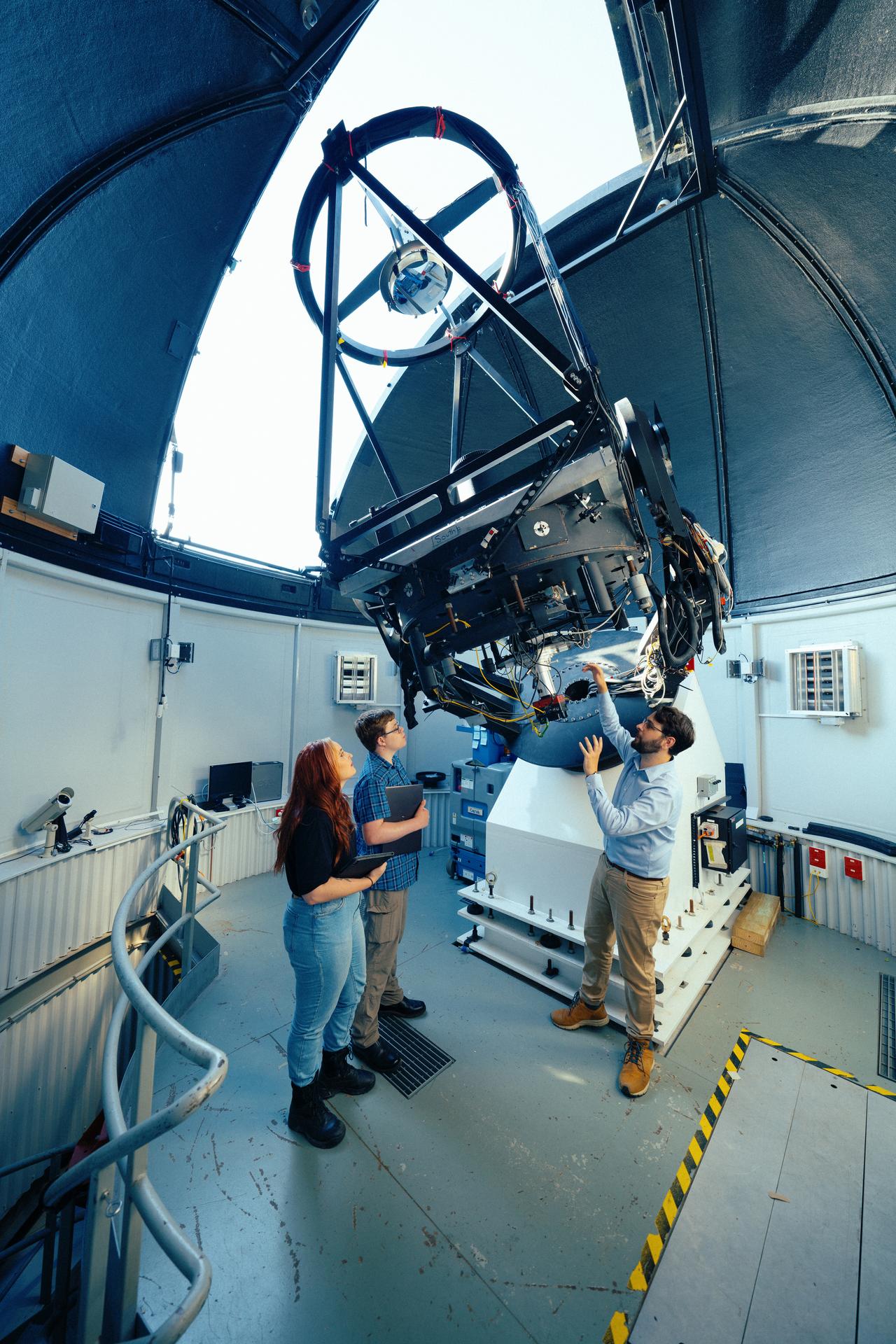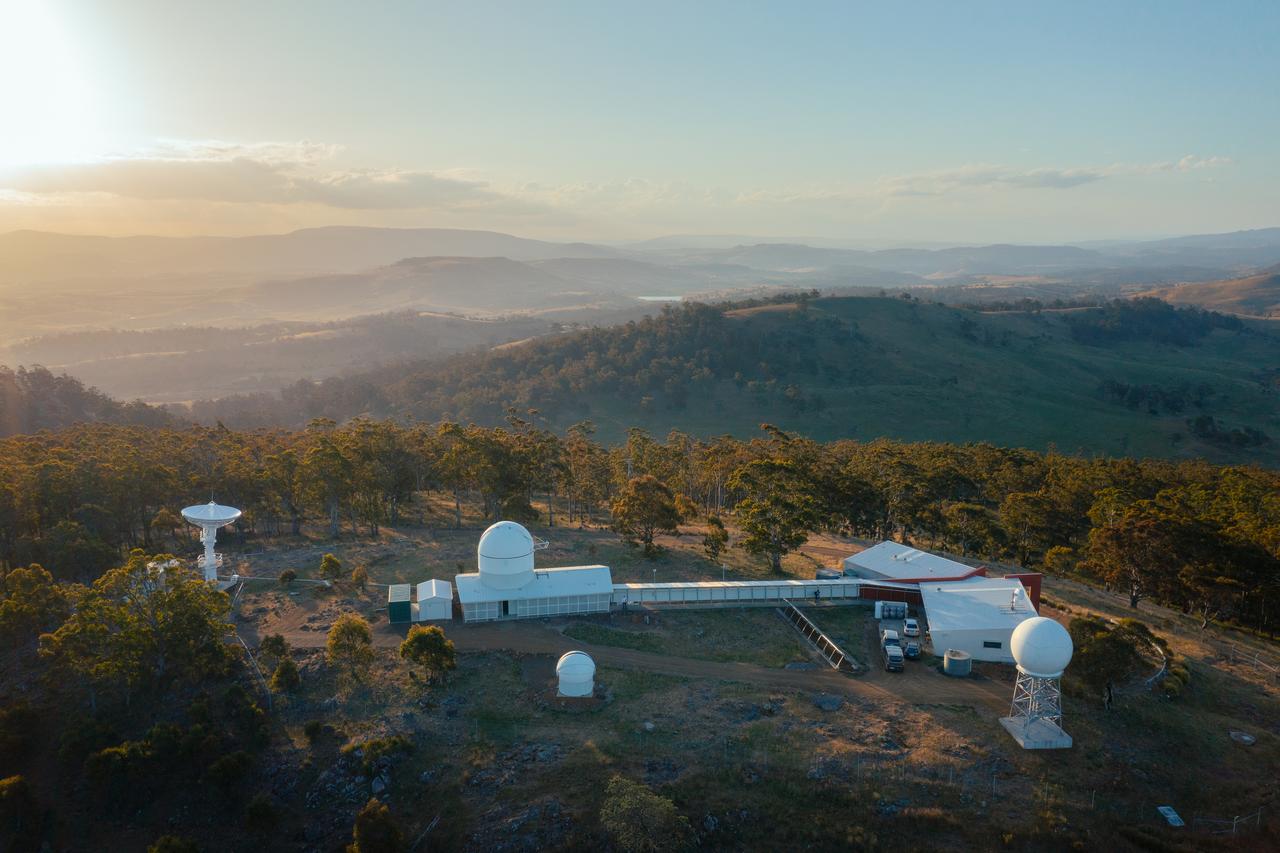Morgan Febey has always thought big and aimed high.
All through primary school, her answer to “what do you want to be when you grow up?” started with palaeontologist, before progressing to archaeologist and then paleoclimatologist.
Then, at the age of 12, she had decided she wanted to be an astronomer. Now, aged 26, she is completing her Bachelor of Science with Honours in Physics, specialising in Astrophysics.
And for her thesis Morgan is studying a curious stellar object that has so far only attracted minimal scientific research, since it is impossible to observe from most of the northern hemisphere, meaning Tasmanian observatories have a unique advantage.
A lifelong science-lover with an insatiably inquiring mind, Morgan knows she has found her calling at the University of Tasmania’s Maths/Physics department.
“I was always very good at maths and science, all through school,” she said. “And I think I was very blessed that, at the same time, I also enjoyed it!

“My long-term plan was always to go to uni and study a Bachelor of Science, I had a very clear path in mind. And when I started my degree I was really impressed by the sheer enthusiasm of the physics teachers, in particular.
“That hooked me, I knew I wanted that to be me one day. I get bored really easily so I’m constantly looking for something to study and learn about!”
Morgan majored in mathematics and physics for her Bachelor of Science degree, studying every astrophysics unit available in her second and third years.
She is specialising in optical astronomy for her Honours thesis, studying a close contact binary star system, called OY Carinae, in which a white dwarf star and a red dwarf star orbit around each other so close and so fast that they complete one orbit every 90 minutes.
And because this star system is located very close to the south celestial pole, it is easily observable from the southern hemisphere but most of the northern hemisphere can’t see it at all.
“Close contact binaries are well researched around the world but this particular one is very under-researched,” Morgan said. “So this one is kinda mine, which is really exciting.
“The two stars orbit each other every 90 minutes, so you can petty much watch them moving in real time, which is amazing. And especially with optical astronomy, when you’re looking directly at this object in visible light – I think there’s a lot of magic in something that feels that tangible.”
OY Carinae also comes with a mystery and Morgan hopes she can contribute towards solving it using her observations and measurements taken from the 50cm and 1.3m optical telescopes at the University’s Greenhill Observatory north of Hobart.
“The timing of these stars as they orbit each other is very regular and easy to measure but there are fluctuations in that timing over a period of about every 35 years.
“We’re not exactly sure what causes that small fluctuation, but one explanation is that it could be a third body orbiting in that same system, which we haven’t been able to prove yet. So I’m looking for evidence to support that.”

Morgan hopes she can continue to study OY Carinae by making it the subject of her PhD in the future. She definitely plans to stay on in the physics department.
“It’s just so much fun here, I think it’s one of the best faculties at the University,” she said. “I get such incredible support from my mentors and teachers.
“And there is so much amazing research coming out of this department as well, there’s always something new being published and everyone always has something cool to talk about.”
Physics is the “why” of everything. It helps us to observe, understand, and explain connections in our world and the wider universe. Studying Science at the University of Tasmania provides plenty of opportunities for curious minds.


